 |
||||
|
HOME
|
US Navy -
ships
|
US Navy - air
units
|
USMC - air
units
|
International
Navies
|
Weapon Systems
|
Special Reports |
||||
|
Royal Canadian Navy - Marine Royale
Canadienne Sikorsky CH-124 Sea King |
||||
 |
||||
| 01/22 | ||||
| Units: | ||||
|
NOTE: the last aircraft was retired in December 2018
|
||||
| Description + Specifications: | ||||
|
The Sikorsky CH-124 Sea King is a
twin-engined anti-submarine warfare (ASW) helicopter designed
for shipboard use by Canadian naval forces, based on the US
Navy's SH-3. It served with the Royal Canadian Navy (RCN) and
Canadian Armed Forces from 1963 to 2018. Design and development: The advent of nuclear-powered attack submarines in the late 1950s prompted RCN leaders to assess the new threat they posed. Although these craft were noisier than older submarines and could therefore be detected at longer ranges, they were also capable of 30 knots (56 km/h) while submerged, which was faster than the top speed of the RCN's new St. Laurent-class destroyer escorts at 28.5 knots (52.8 km/h). Some RCN leaders harbored serious doubts that the destroyers could effectively pursue and destroy such fast vessels, even when operating in pairs. During a 25 February 1959 meeting of the Naval Board, it was decided that the Navy would counter the new threat by outfitting destroyers for helicopter operation. The RCN had examined the feasibility of operating ASW helicopters from small escorts when it modified the Prestonian-class frigate HMCS Buckingham (FFE 314) in mid-1956 with a temporary helicopter landing platform. Successful trials were held in October 1956 using a Sikorsky HO4S-3 and a larger temporary landing platform was soon installed on the new destroyer escort HMCS Ottawa (DDE 229). Operational trials were conducted using an RCAF Sikorsky S-58, a substantially larger and heavier aircraft than the HO4S, and the success of these tests led to approval of the concept. The RCN's then current HO4S-3 utility helicopter could not operate safely in inclement weather with a heavy weapons and sensor load, which would be imperative for the ASW role; hence, a more capable aircraft was needed. Initial 1959 studies identified two helicopters that seemed suitable - the Sikorsky S-61 (HSS-2) and the Kaman K-20 (HU2K) - but neither aircraft had flown at the time, so no choice was made. After further studies concluded that the smaller Kaman would better satisfy RCN requirements, the Treasury Board approved an initial procurement of 12 HU2K helicopters for $14.5 million in December 1960. Despite this apparent setback for Sikorsky, several factors would derail the Kaman proposal. When the Naval Board held a follow-up meeting on 27 January 1961 to discuss the program, it was revealed that the asking price for the initial 12 units had nearly doubled to $23 million, a mere 6 weeks after the Treasury Board had approved the purchase. The Naval Board continued to endorse the HU2K, but some RCN leaders had serious misgivings due to the drastic price increase and staff reports that Kaman's performance projections might be overly optimistic. The Naval Board decided to await upcoming USN sea trials of the HU2K before rendering a final decision. The USN trials confirmed the calculations of RCN staff members; the HU2K was substantially heavier than promised, hampering its flight performance and rendering it incapable of meeting RCN requirements, even if Kaman were to install a proposed upgraded engine. The Sea King was ultimately chosen for production on 20 December 1961. The first of 41 helicopters would be delivered in 1963 carrying the designation CHSS-2 Sea King. The airframe components were made by Sikorsky in Connecticut but most CHSS-2s were assembled in Longueuil, Quebec, by United Aircraft of Canada (now Pratt & Whitney Canada), a subsidiary of Sikorsky's parent company, United Aircraft. On 27 November 1963, the new landing platform aboard HMCS Assiniboine (DDH 234) was used for the first operational destroyer landing of a production CHSS-2. Upon the unification of Canada's military in 1968, the CHSS-2 was re-designated CH-124. In the 1960s, the RCN developed a technique for landing the huge helicopters on small ship decks, using a 'hauldown' winch (called a "Beartrap"), earning aircrews the nickname of "Crazy Canucks". The Beartrap allows recovery of the Sea King in virtually any sea state. In 1968, the RCN, Royal Canadian Air Force (RCAF) and Canadian Army unified to form the Canadian Forces; air units were dispersed throughout the new force structure until Air Command (AIRCOM) was created in 1975. In August 2011, the Canadian Forces reverted to the former structure of the Royal Canadian Navy, Canadian Army and Royal Canadian Air Force. Operational service: The Sea Kings were assigned to the former Iroquois-class destroyers (2 per ship with total of 6), Halifax-class frigates (1 per ship with total of 12), and the former Protecteur-class replenishment ships (3 per ship with total 6) as a means of extending the surveillance capabilities beyond the horizon. When deployed, each Sea King is accompanied by several crews. Each crew consists of two pilots, a Tactical Coordinator (TACCO), and an Airborne Electronic Sensor Operator (AESOp). In order to find submarines, the Sea King's sonar uses a transducer ball at the end of a 450-foot cable. It can also be fitted with FLIR to find surface vessels at night. The CH-124 has undergone numerous refits and upgrades, especially with regard to the electronics, main gearboxes and engines, surface-search radar, secure cargo and passenger carrying capabilities. In 2013 the CH-124 fleet averaged 9-14,000 flying hours, while Sea Kings of other fleets go as high as 40,000 hours. Although the CH-124 had frequent technical issues, none are serious, and they could maintain an 87 percent serviceability rate. On 1 December 2018, the CH-124 was officially retired in a ceremony at Vancouver Island, British Columbia, concluding 55 years of service. Of the surviving 28 Canadian Sea Kings, nine are destined for museums or to be displayed as monuments, 15 are to be sold, three scrapped, and one retained as a training aid. Variants: CH-124 Anti-submarine warfare helicopter for the Royal Canadian Navy (41 assembled by United Aircraft of Canada). CH-124A The Sea King Improvement Program (SKIP) added modernized avionics as well as improved safety features. CH-124B Alternate version of the CH-124A without a dipping sonar but formerly with a MAD sensor and additional storage for deployable stores. In 2006, the five aircraft of this variant were converted to support the Standing Contingency Task Force (SCTF), and were modified with additional troop seats, and frequency agile radios. Plans to add fast-rope capability, EAPSNIPS (Engine Air Particle Separator / Snow & Ice Particle Separator) did not come to fruition. CH-124B2 Six CH-124Bs were upgraded to the CH-124B2 standard in 1991-1992. The revised CH-124B2 retained the sonobuoy processing gear to passively detect submarines but, the aircraft was now also fitted with a towed-array sonar to supplement the ship's sonar. Since anti-submarine warfare is no longer a major priority within the Canadian Forces, the CH-124B2 were refitted again to become improvised troop carriers for the newly formed Standing Contingency Task Force. CH-124C One CH-124 operated by the Helicopter Operational Test and Evaluation Facility located at CFB Shearwater. Used for testing new gear, and when not testing new gear, it is deployable to any Canadian Forces ship requiring a helicopter. Specifications (CH-124 Sea King): Crew: 4 (2 pilots, 1 navigator, 1 airborne electronic sensor operator) Capacity: 3 passengers Length: 54 ft 9 in (16.69 m) Height: 19 ft (5.8 m) Empty weight: 14,530 lb (6,591 kg) Gross weight: 20,540 lb (9,318 kg) Max takeoff weight: 22,050 lb (10,002 kg) Powerplant: 2 x General Electric T58-GE-8F / T58-GE-100 turboshaft engines, 1,500 shp (1,100 kW) each Main rotor diameter: 62 ft (19 m) Main rotor area: 3,019.5 sq ft (280.52 m2) Maximum speed: 120 kn (222 km/h) Cruise speed: 90 knots (167 km/h) Range: 400 nmi (740 km) Service ceiling: 10,000 ft (3,048 m) Rate of climb: 1,310-2,220 ft/min (6.7-11.3 m/s) Armament: 2 x Mk.46 Mod.5 anti-submarine torpedoes various sonobuoys and pyrotechnic devices door guns (some variants) source: wikipedia + DND-MDN Canada |
||||
| images | ||||
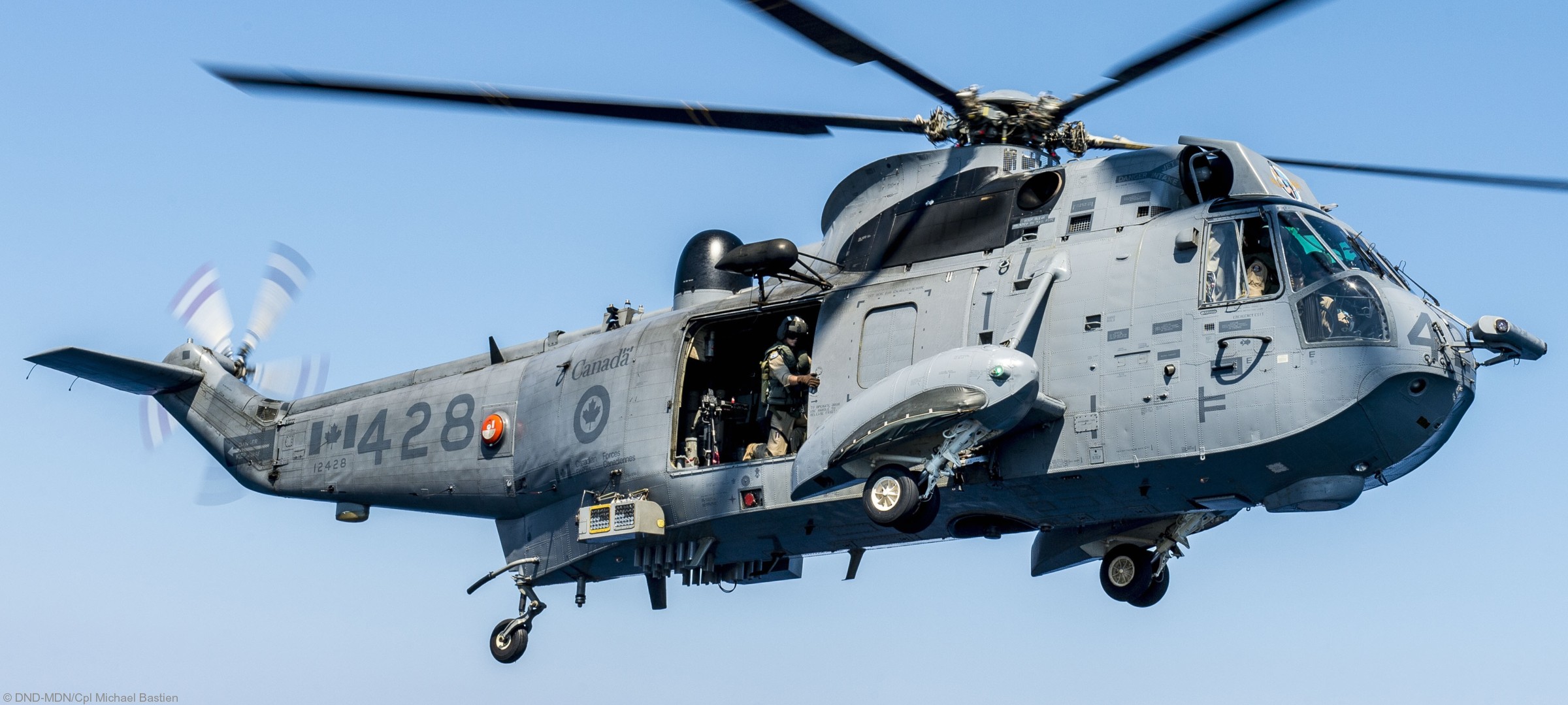             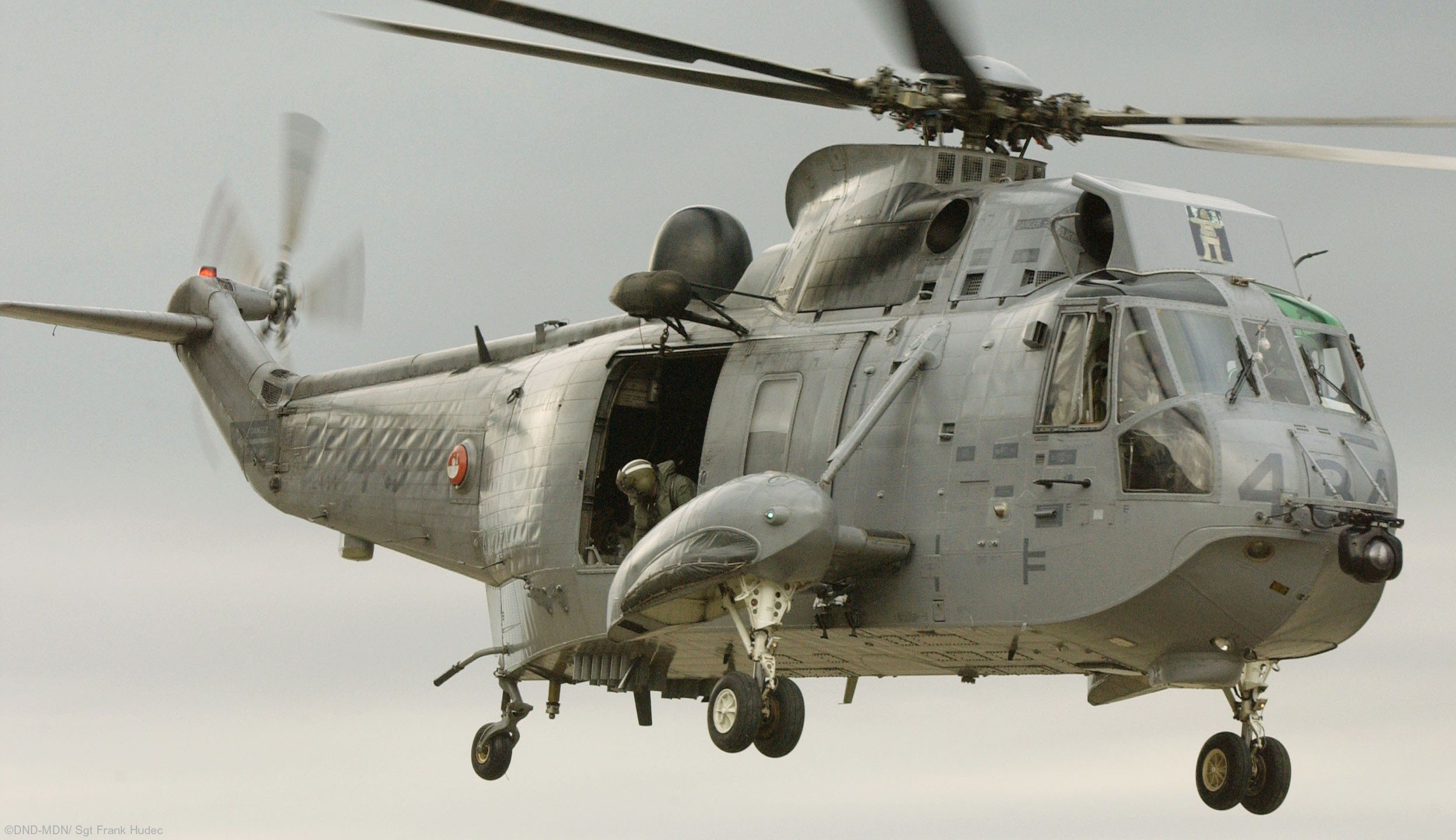 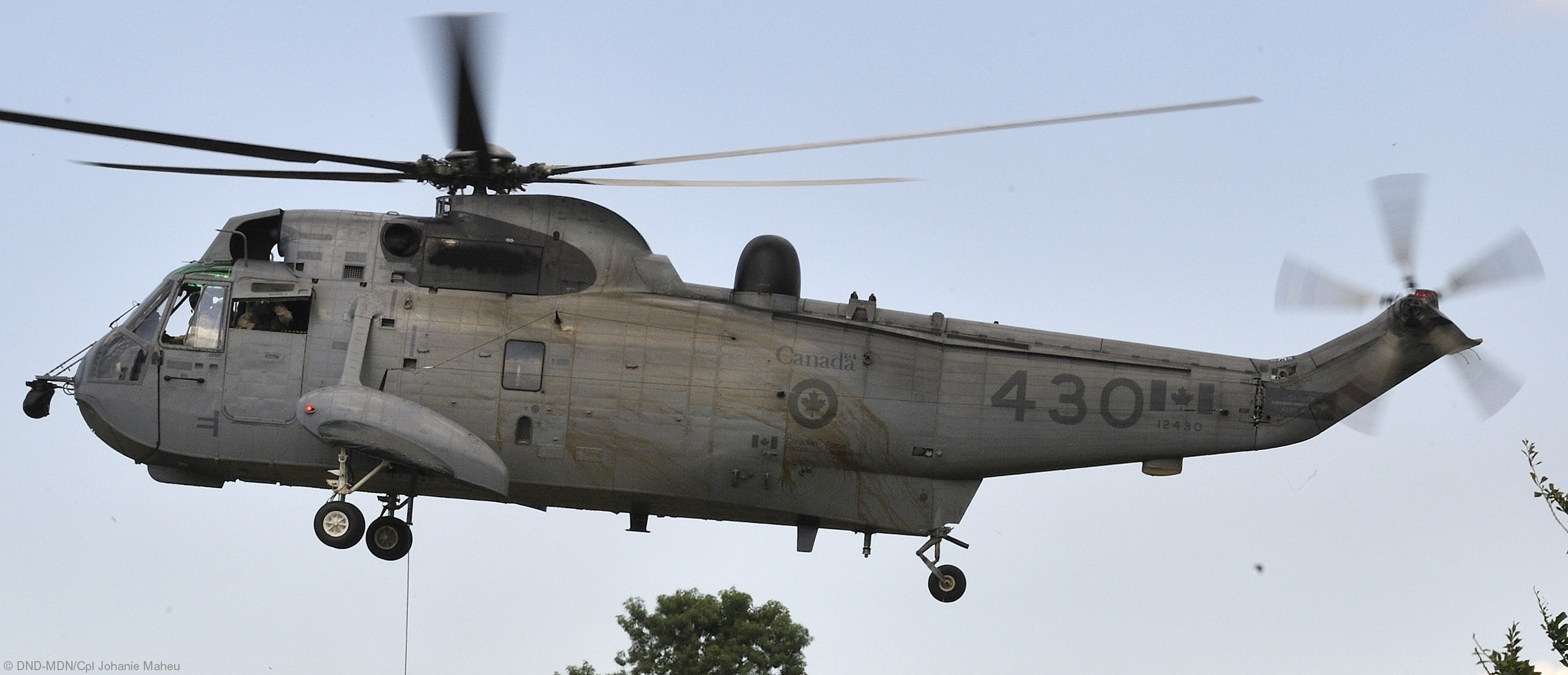  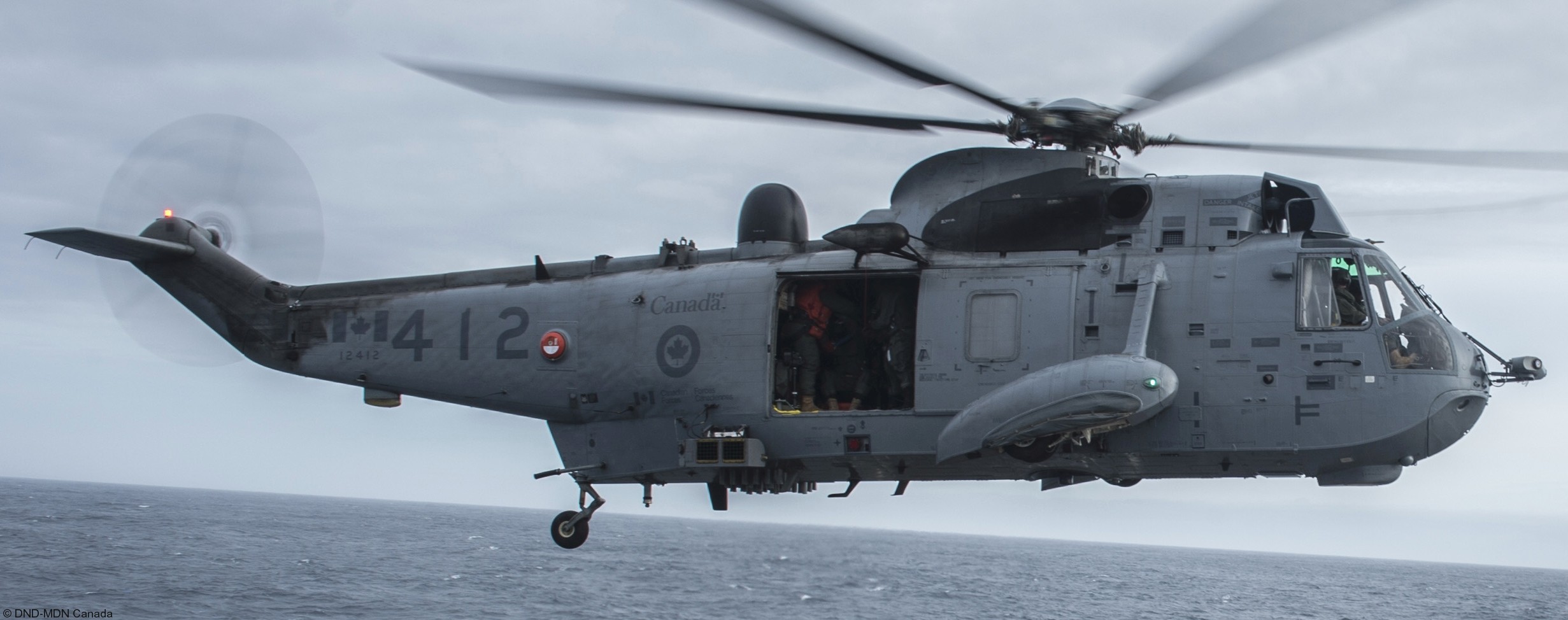  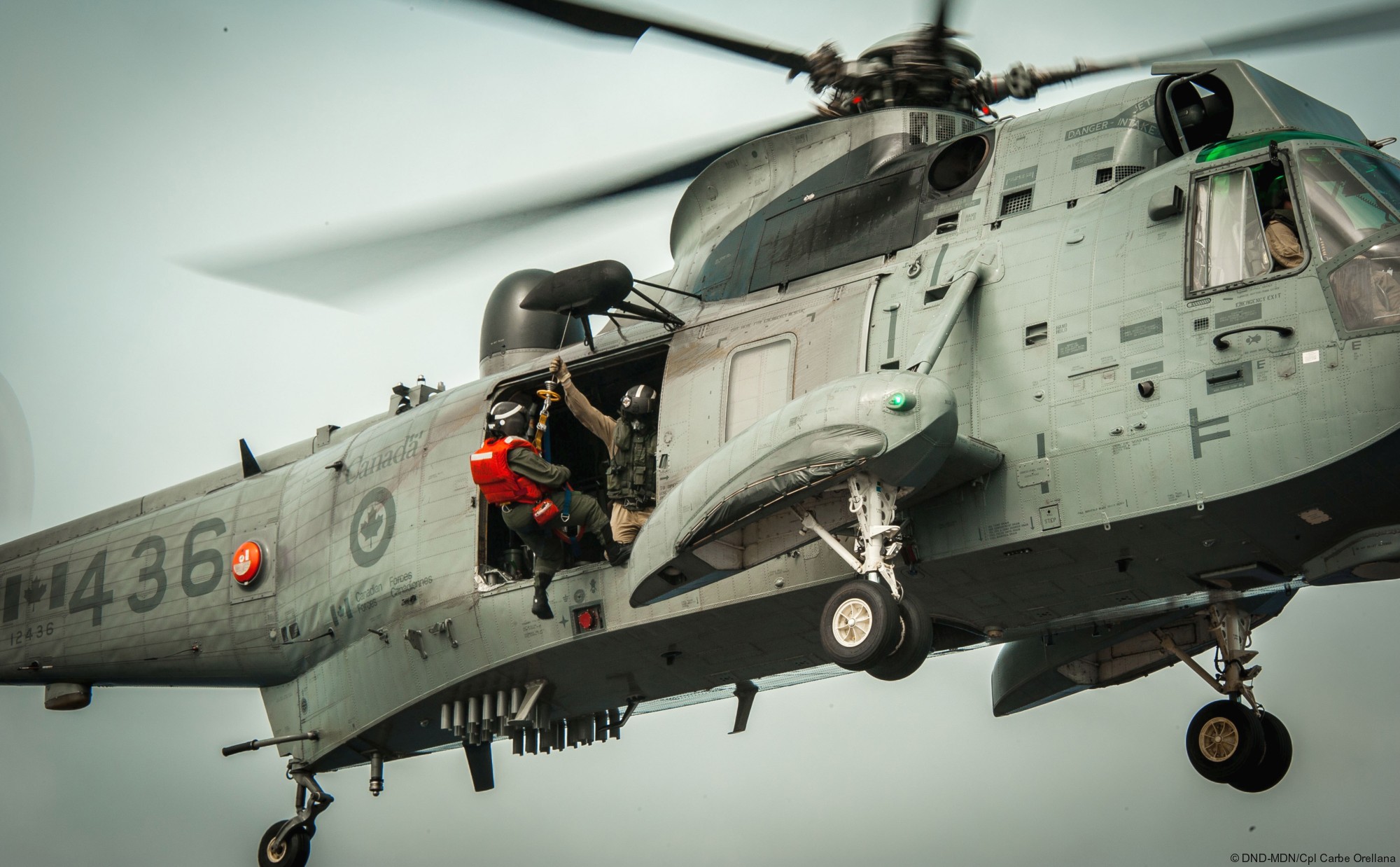           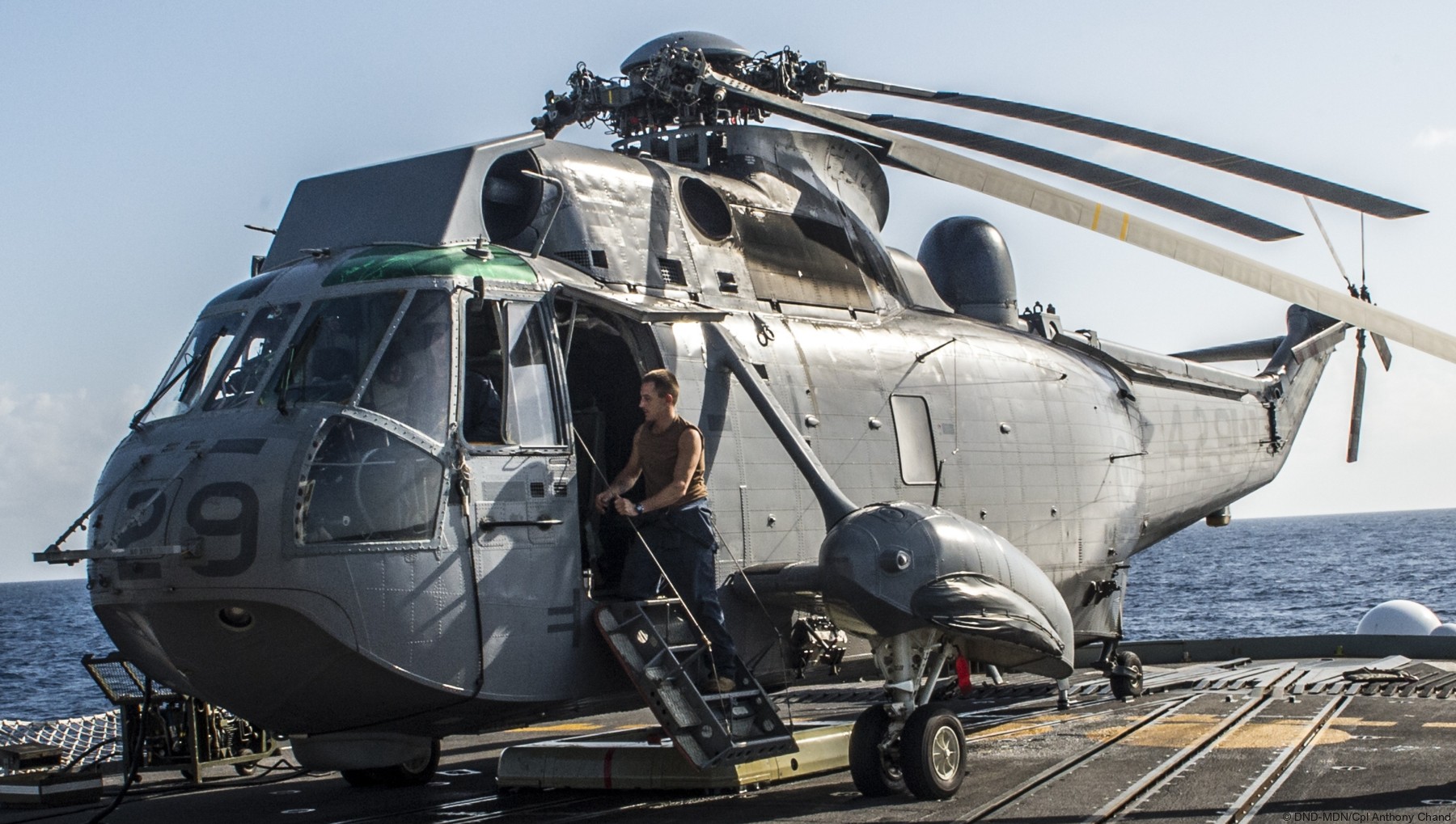          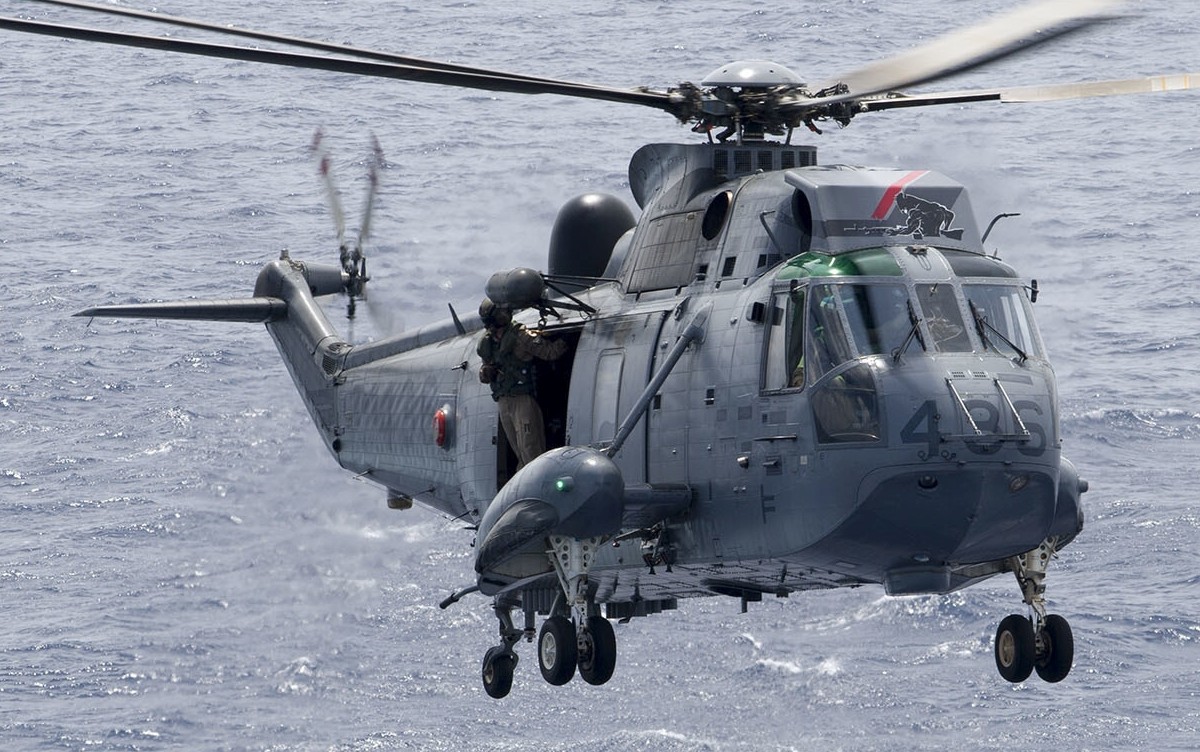   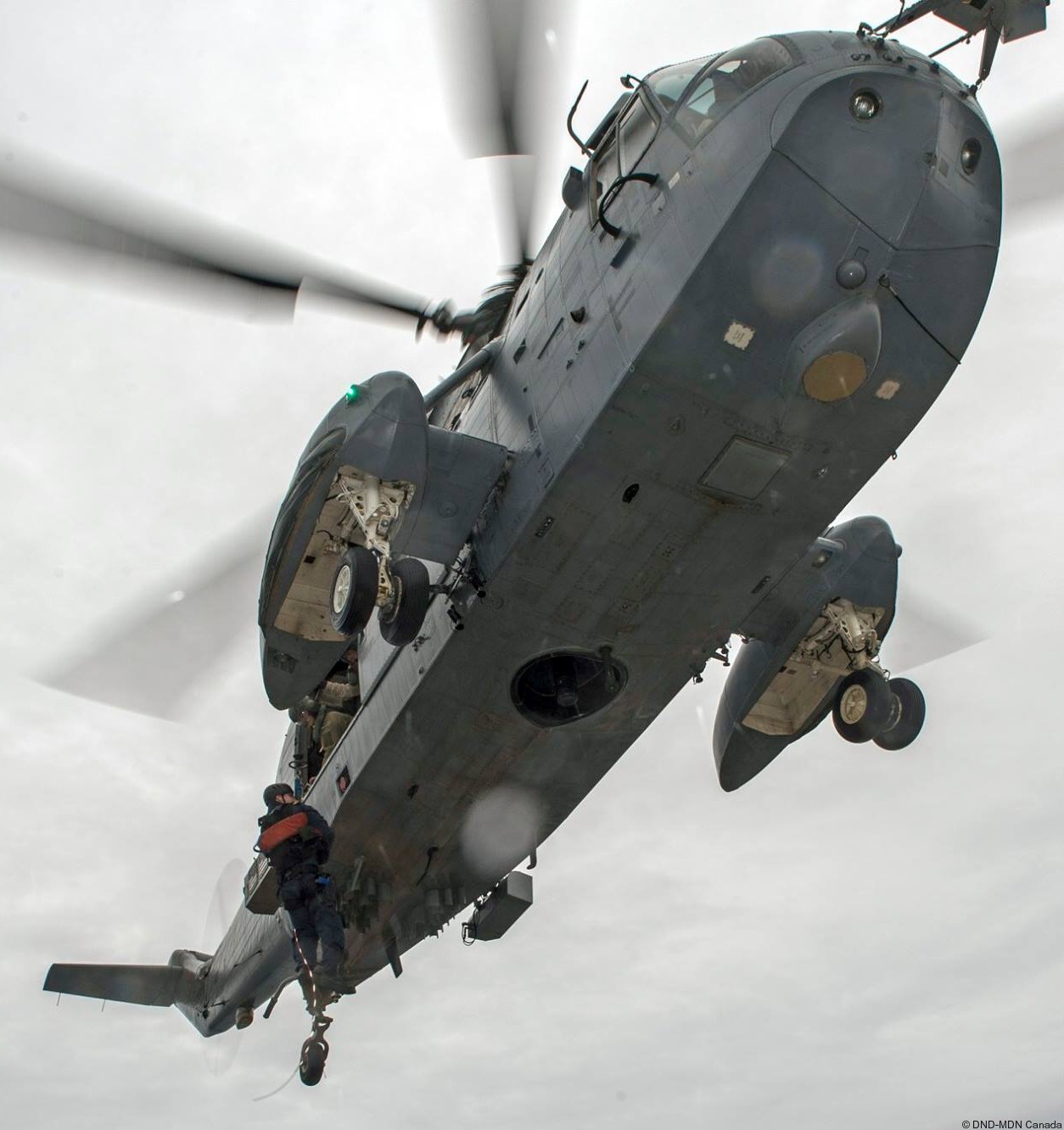                   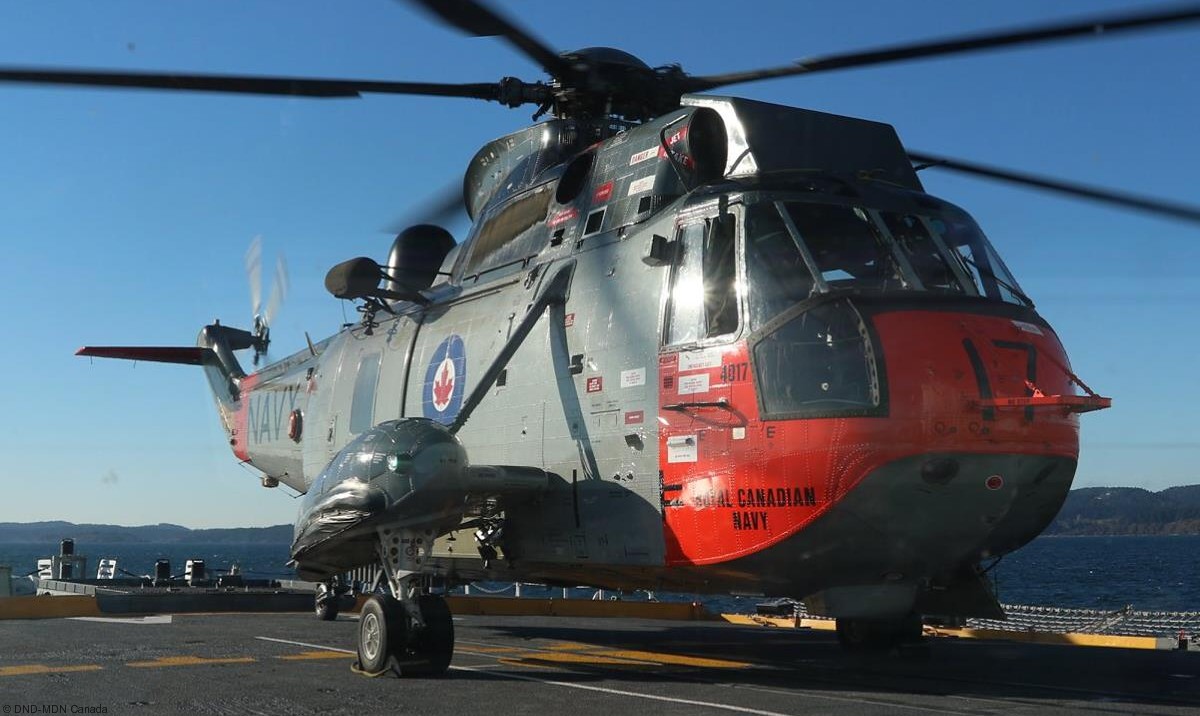    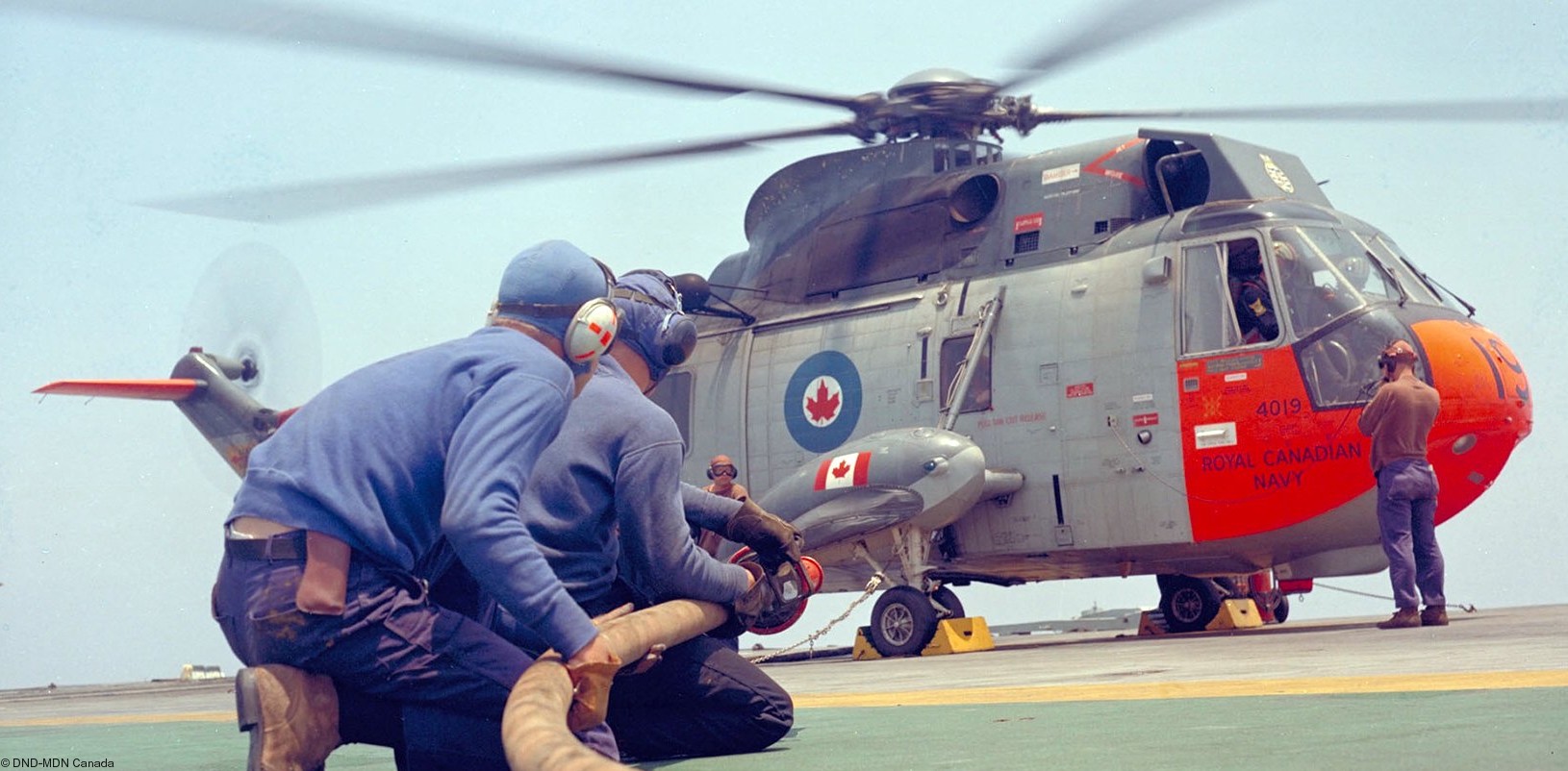        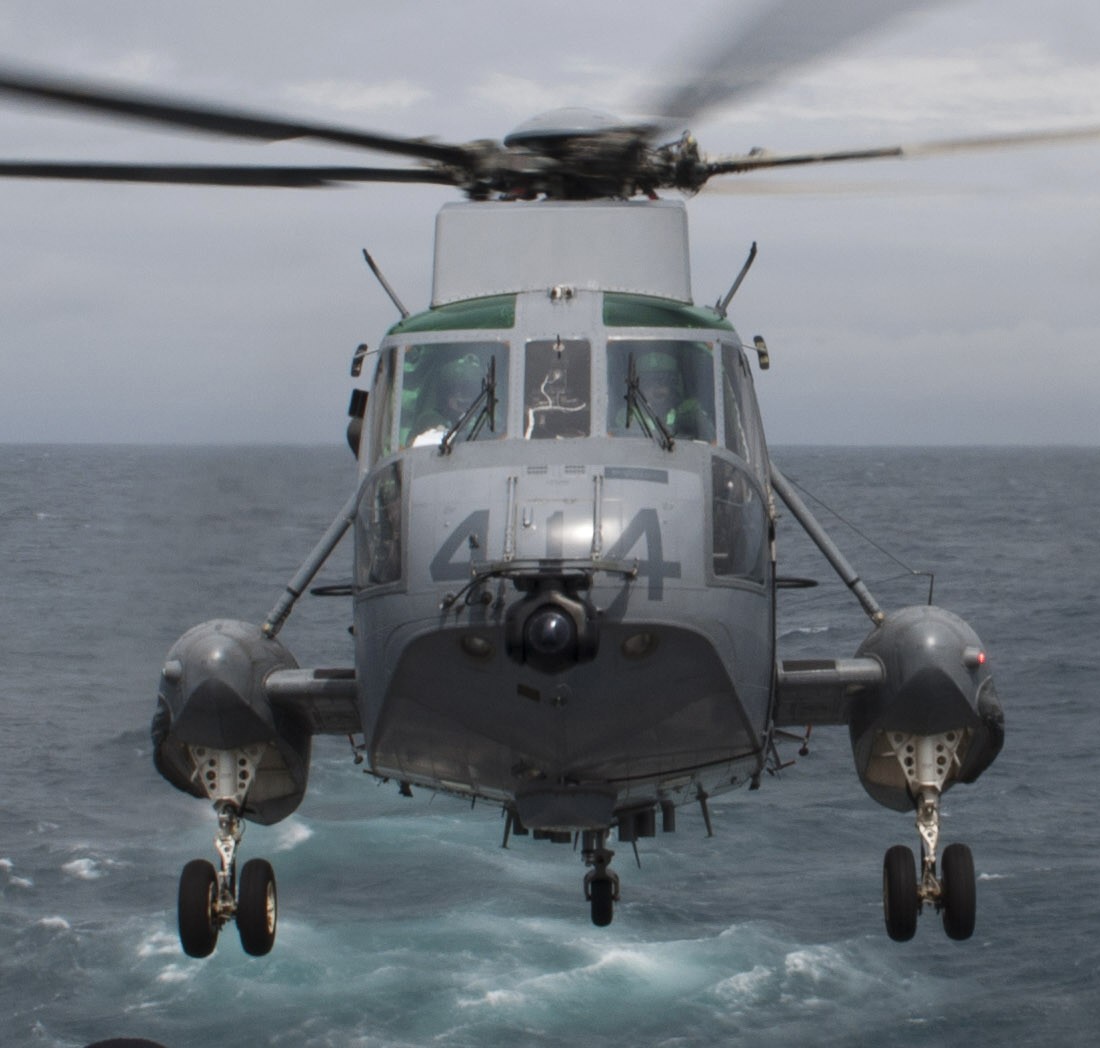     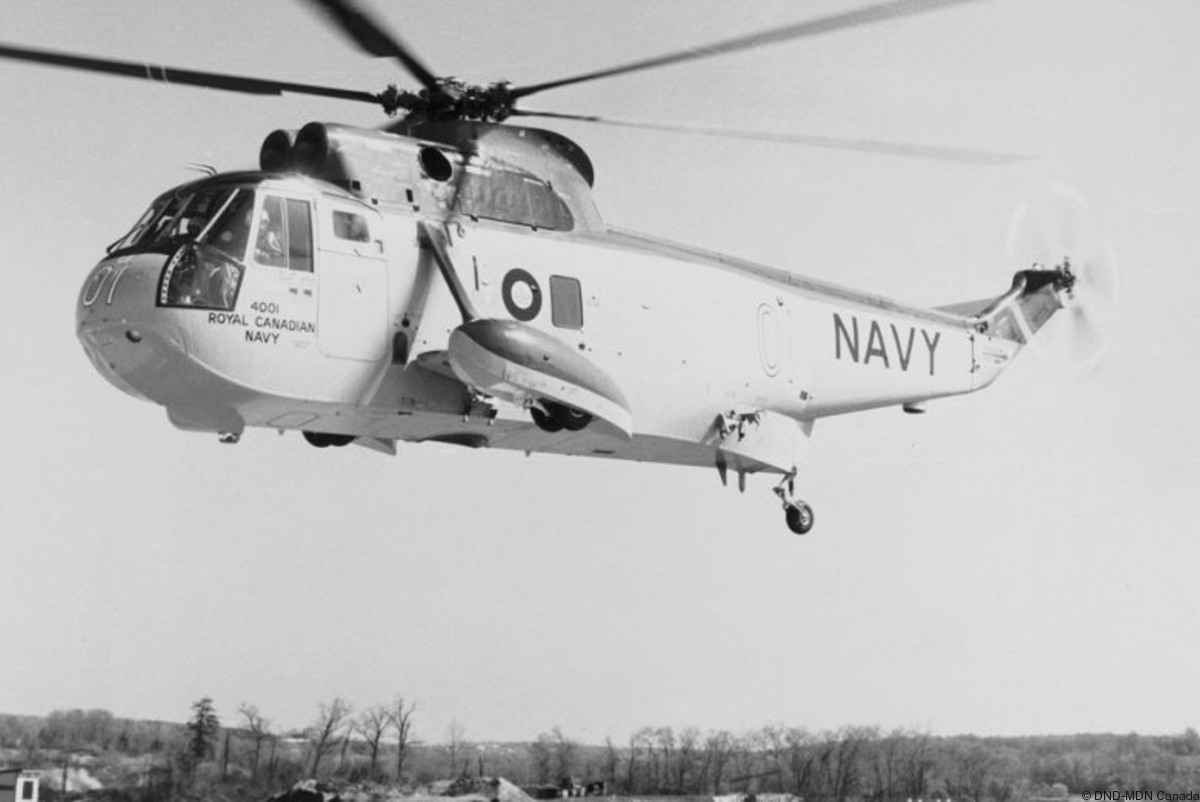  |
||||
| | seaforces.org | Royal Canadian Navy start page | |


